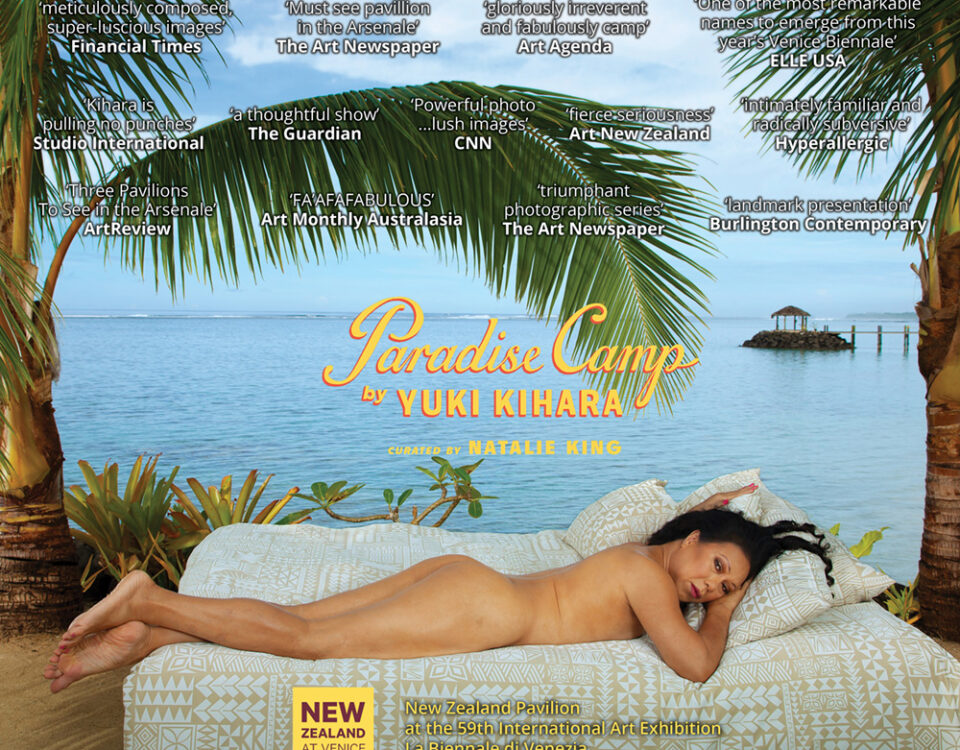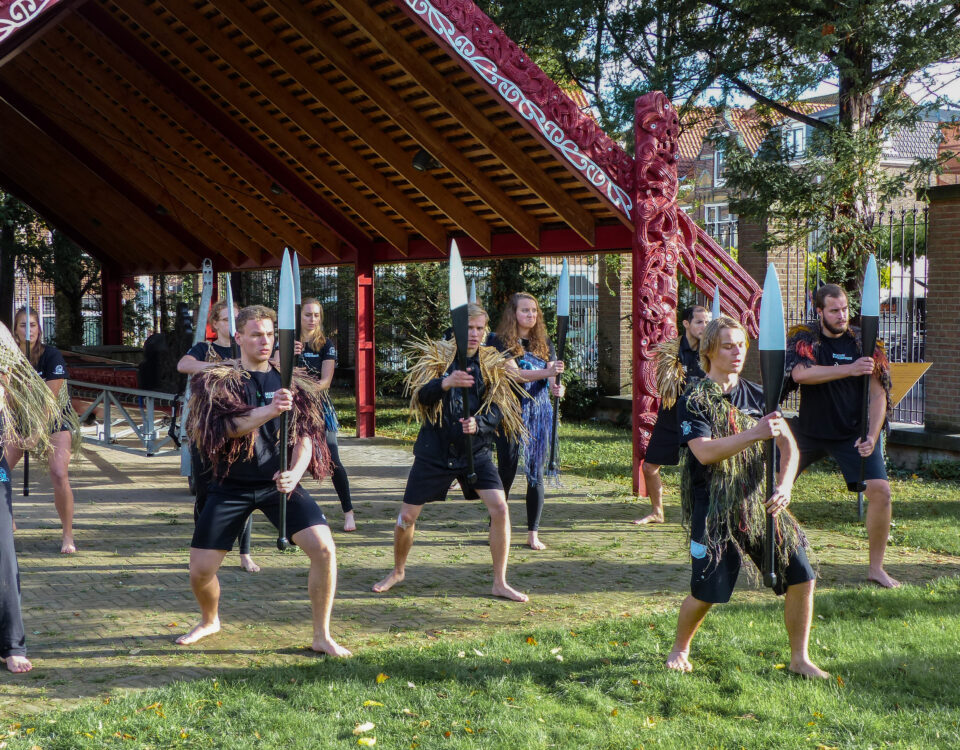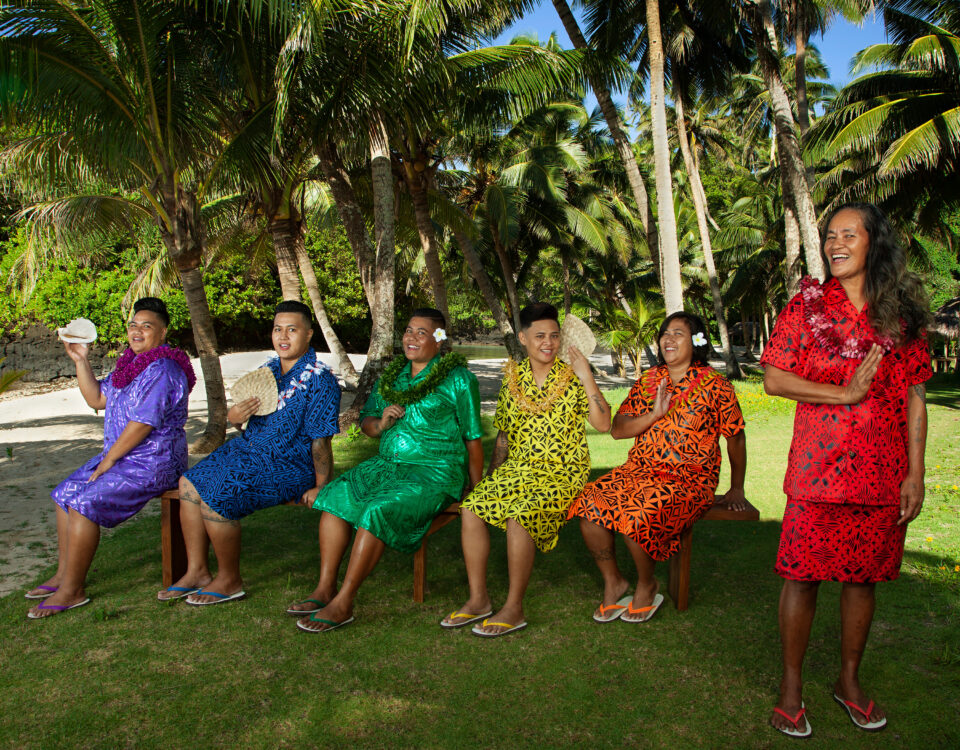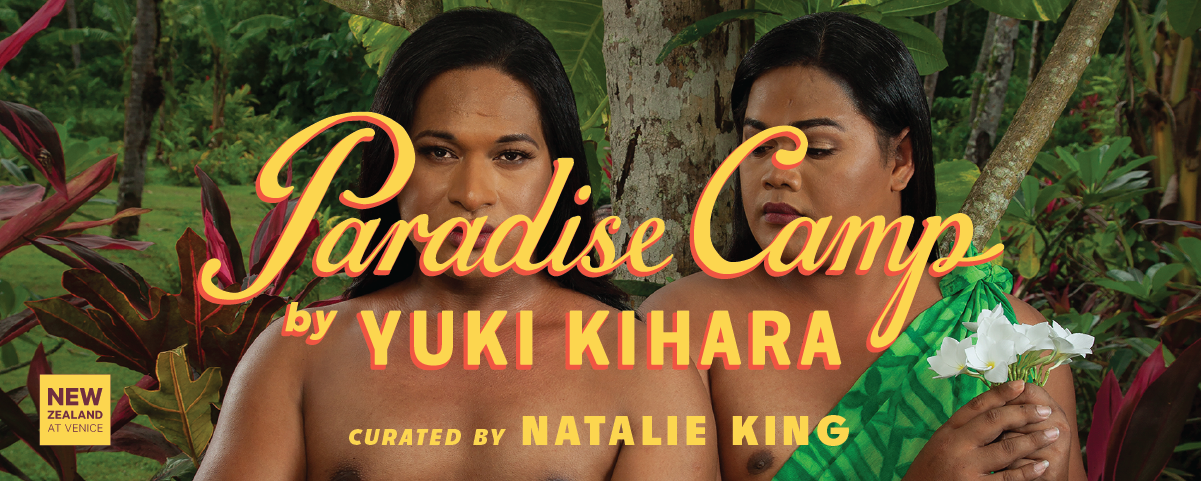
ArtReview – The Intersectional Experiences of Fa’afafine: Yuki Kihara on Representing New Zealand at the 59th Venice Biennale
April 18, 2022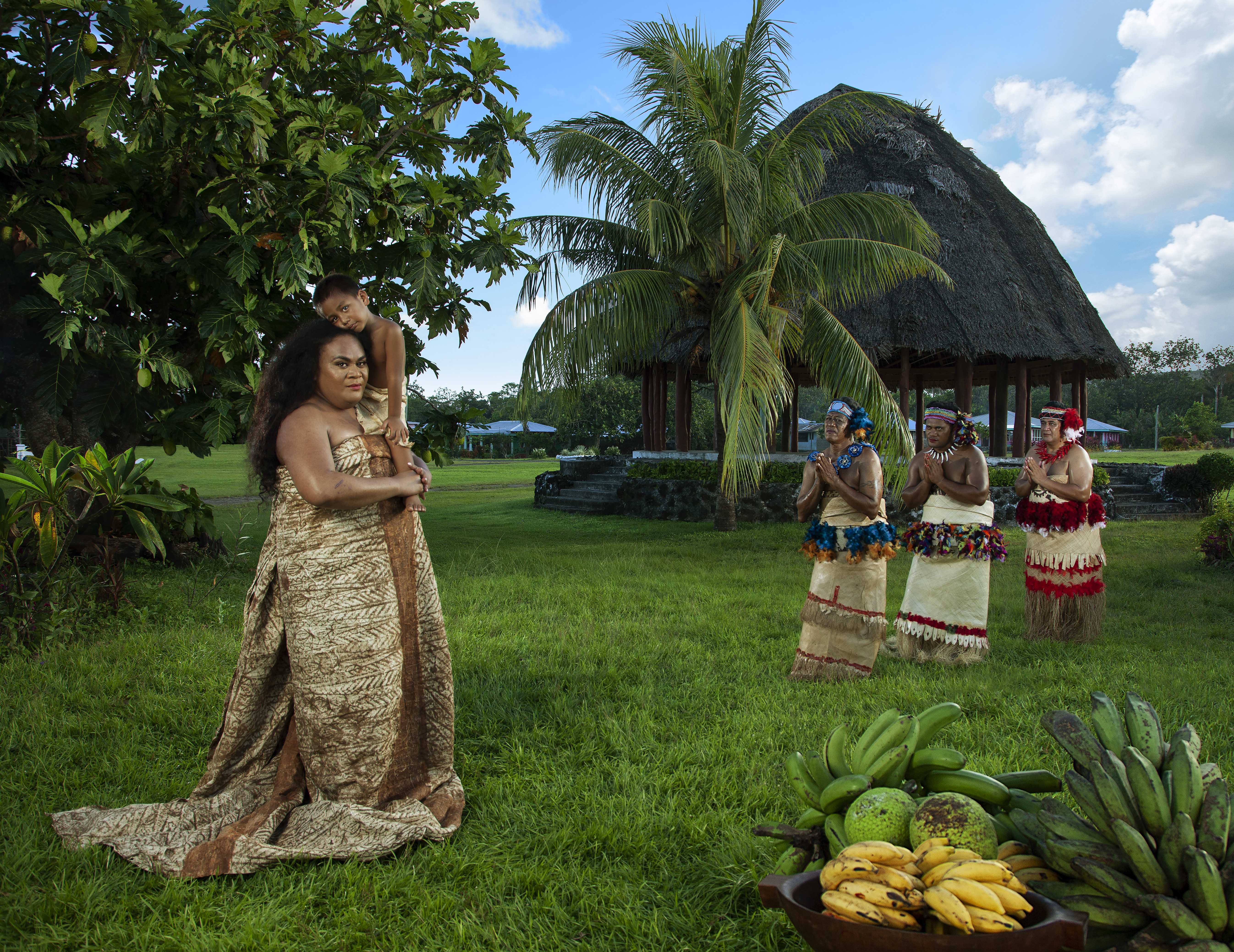
Tatala Aloaia le Faaliga a Niu Sila i Venice fa’atasi ai ma le Tolauapiga Fa’aparataiso a Yuki Kihara
April 20, 2022New Zealand’s pavilion opens in Venice with Yuki Kihara’s Paradise Camp
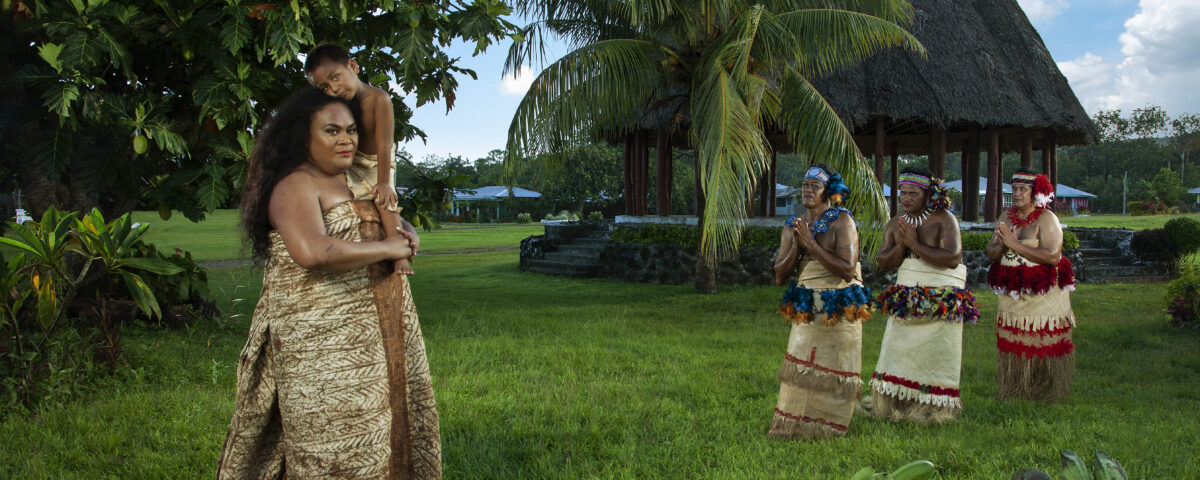
Si‘ou alofa Maria: Hail Mary, (After Gauguin) [2020] (detail) from Paradise Camp [2020] series by Yuki Kihara. Image courtesy of Yuki Kihara and Milford Galleries, Aotearoa New Zealand.
New Zealand’s pavilion at the 59th International Art Exhibition – La Biennale di Venezia has officially opened with Yuki Kihara’s ensemble exhibition Paradise Camp, curated by Natalie King.
Minister for Arts, Culture, and Heritage Carmel Sepuloni says, “Yuki, being the first Pacific, Asian and Fa’afafine artist to represent Aotearoa at the prestigious Venice Biennale, has gifted the New Zealand arts community with an incredible moment to cherish.”
Located in the Artiglierie, a central location in the Arsenale, Paradise Camp comprises twelve tableau photographs featuring a cast of Sāmoan Fa’afafine (Sāmoa’s ʻthird gender’), repurposing and upcycling selected paintings by the late post-impressionist artist Paul Gauguin.
Inspired by the faleaitu (house of spirits) skits performed in Sāmoan culture, Kihara also casts herself as Gauguin in Paul Gauguin with a hat (After Gauguin). In this ingenious role reversal, Kihara is transformed via silicone prosthetics, costume, moustache and wig.
Shot and filmed on location in Upolu Island, Sāmoa, Kihara’s performative photography is presented against a vast wallpaper of a landscape decimated by the 2009 tsunami, and alongside First Impressions: Paul Gauguin – a five-part talk-show series commissioned by Fine Arts Museum of San Francisco and Ny Carlsberg Glyptotek, Copenhagen in 2019, where a group of Fa’afafine comment wittily on select Gauguin paintings.
The exhibition features a “Vārchive” – a term coined by Kihara that uses the Sāmoan concept of Vā to describe her relationship with her archive of research.
The artist says, “My Vārchive includes personal research, rare books by 19th century explorers, colonial portraits, pamphlets, news items, a geological sculpture, activist material and visual links between Gauguin and Sāmoa. It provides a backstory or a living story of how Paradise Camp came into being. Through this, the archive doesn’t become storage for dead information but rather a living entity that helps to provide new meaning in the present and what it might mean in the future.”
Minister Sepuloni adds, “Paradise Camp will undoubtedly engage and captivate the Venice Biennale’s global audiences in its capture of the rich blend of intersecting communities Yuki and many other artists in New Zealand belong to.”
Kihara, the first artist from New Zealand to present at the Biennale Arte who is Pasifika, Asian and Fa’afafine has spearheaded a Firsts Solidarity Network. This is an artist-led initiative comprising of artist/s who are a ʻfirst time’ representative from a marginalised or under-represented community in their respective country or a first-time participant at the Biennale.
Caren Rangi, Commissioner of New Zealand’s presentation at the Biennale Arte 2022 and Chair of the Arts Council of New Zealand Toi Aotearoa says, “The Arts Council, like the rest of the art world, is acutely aware of the need to pivot digitally in response to the impacts of COVID-19. Over a year ago, Yuki and her team commenced work on a wide range of digital content and the Arts Council has worked with a digital partner, Digital Arts Network, to create a digital component that allows audiences to watch and hear Kihara speaking to her research and creation process, and Paradise Camp themes and stories.”
By using immersive digital experiences, this allows pavilion visitors and overseas audiences, including New Zealand and the Pacific, to engage with and learn about the work.
“We’re excited to establish a partnership of this nature for the first time – marking yet another first for the New Zealand pavilion,” adds Rangi.
A companion publication to the exhibition has been published by Thames and Hudson and edited by Natalie King. Featuring commissioned contributors from around the world, it explores the interwoven strands running through Kihara’s Paradise Camp.
“The book charts Kihara’s alternative, queer world that is both confronting and hypnotic in its humanity, while redrawing the afflictions of colonisation,” notes King.
High-profile contributors include Cuban artist, scholar and activist Coco Fusco, Tahitian author Chantal Spitz, Sāmoan artist and writer Dan Taulapapa McMullin, renowned Gauguin scholar Professor Elizabeth Childs, Filipino curator Patrick Flores, Māori activist, Emeritus Professor and Venerable Elder Scholar Ngahuia Te Awekotuku and scholar and Paradise Camp curator, Natalie King OAM.
In 2023, Paradise Camp will tour to Powerhouse Museum, Sydney.
The 59th International Art Exhibition – La Biennale di Venezia will open to the public from 23 April to 27 November 2022.
To access high-res images and footage, visit: https://www.nzatvenice.com/media/
Additional collateral/information:
- The New Zealand pavilion virtual opening on Facebook and YouTube
- Online talanoa with Yuki Kihara and the NZ Pavilion Curators on Facebook and YouTube
For more information on New Zealand’s presentation at the Biennale Arte 2022, visit www.nzatvenice.com or follow us on Facebook, Instagram and Twitter


